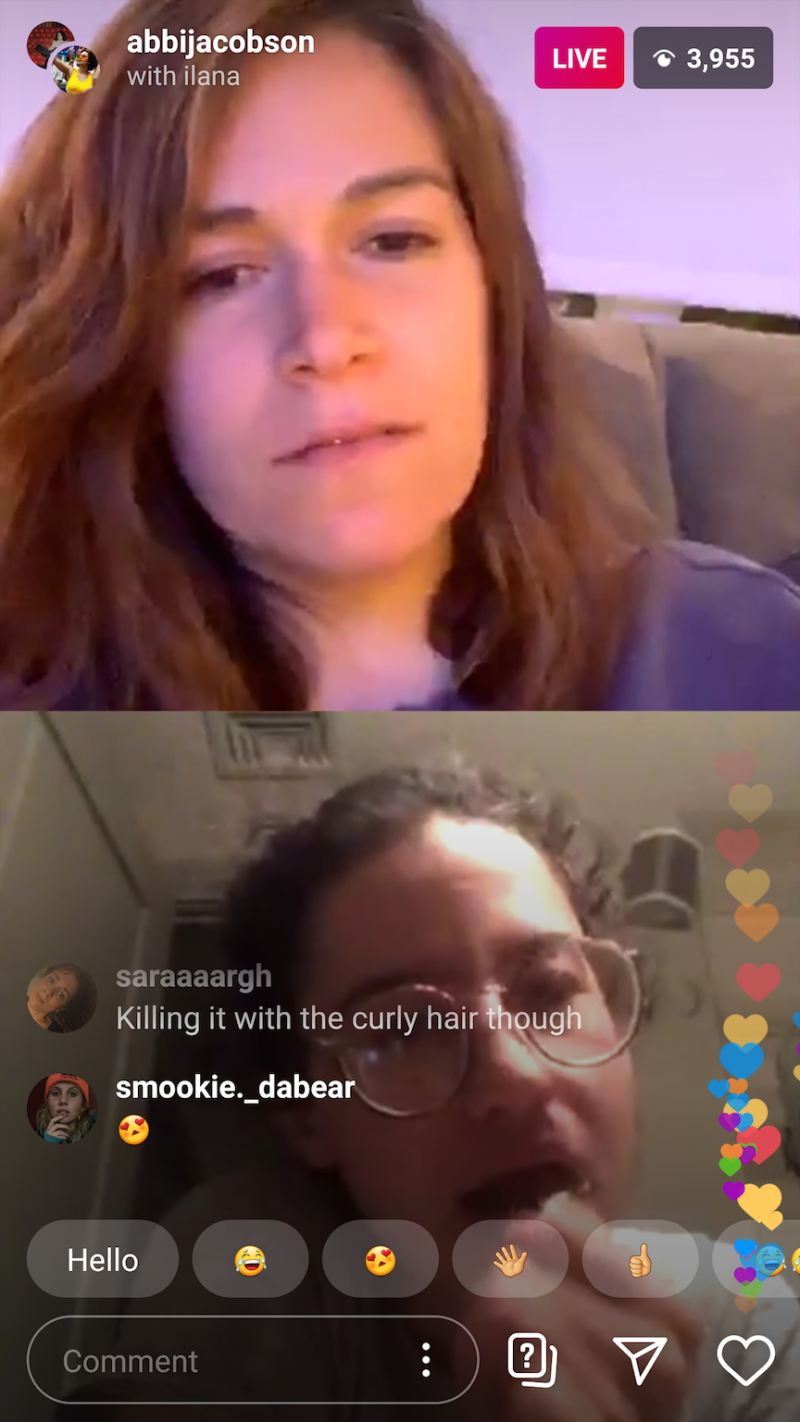It’s happened to us all in the last few weeks. There you are, scrolling through Instagram minding your own business, when that little pop-up window appears, informing you with some urgency that an account you follow is going live. Without even thinking, you click it, only to find yourself in a dark virtual room with a human you met in passing at a party three years ago. And they’re reading Moby Dick to their cat.
Since shelter-in-place orders came down, the uptick in live events on social media has been a double-edged sword. The people rushing to fulfill our increased desire for virtual social connection fall into two clear categories: those who strive to deliver, whether it be through interviews, music, comedy or instructional classes. And those who simply phone it in—the folks that go live while cleaning their kitchens, or sitting on the couch eating snacks, or casually chatting to their spouse in a directionless manner. All of which pose awkward etiquette conundrums for the rest of us.
“Unless you are Beyoncé, going live just to go live is probably a terrible idea,” says Carly Severn, KQED’s senior social media strategist. “Surprisingly early on in this shelter-in-place, I didn’t dare touch the top third of my phone’s screen for fear of being catapulted into somebody’s jam session. Or worse—their two-glasses-deep Q&A.”
Under the current conditions, for every nice surprise—last Saturday, I spent an hour “two-stepping in the kitchen” to a mood-lifting DJ Jazzy Jeff set—there is a sigh-inducing disappointment. Like the Bay Area record store that went live over the weekend, camera zoomed in on decks like a DJ set was imminent, only to throw on a David Bowie album and wander off. (They know we can all just do that ourselves with YouTube, right?)
“The point of what makes a good live broadcast hasn’t really changed,” Severn explains. “Everyone doing this stuff should absolutely still ask themselves, ‘What do I want to achieve here, who am I doing this for, and why would they want to watch this?’ And they should unplug their router until they’ve asked themselves those questions.”



